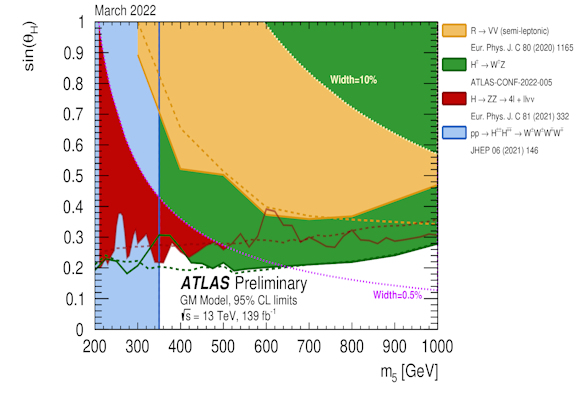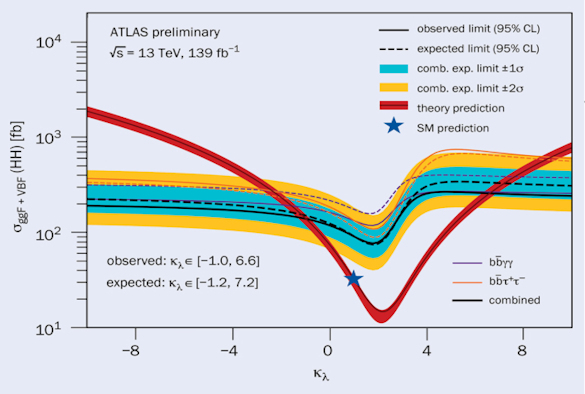Tracking technical paper published

A new paper, outlining the build and performance of the tracking detectors for the g-2 experiment, has been published in the IOP Journal of instrumentation. The tracking detectors were built here in the Liverpool Semiconductor Detector Centre and in 2017 were installed into the experiment at Fermilab, a US national laboratory in Illinois.
The detectors, which consist of 25μm diameter sense wires inside 15μm thick mylar straw walls, are continuously flowing Argon Ethane. They operate in vacuum, in a steep magnetic field gradient. The combination of this environment and the tight spatial requirements made the build particularly challenging. 23 modules were built and tested at Liverpool.

Fig. 1. Observed (solid) and expected (dashed) upper limits at 95% CL on the non-resonant HH production cross section as a function of the coupling strength of the Higgs boson trilinear-self-coupling κ λ.The lower and upper limits on κ λ are determined by the crossing points of the upper limits on the HH cross section with the theory prediction.
They measure the oscillations of the stored muon beam, and played a major role in the measurement of the anomalous magnetic moment of the muon, published in April 2021. The meticulous design and build here at Liverpool resulted in an average straw hit resolution of ~110μm, which was beyond the design goal. This is shown in Figure 2. The detectors are also capable of operating at much earlier times than anticipated, which allows for precision measurements of the beam just after injection. The detectors continue to operate at this unprecedented level, and will play a major role in the forthcoming g-2 results.
The new paper can be found at https://iopscience.iop.org/article/10.1088/1748-0221/17/02/P02035. As a tribute, Dr. Barry King, who played a major role in the design and build at Liverpool, is listed as the lead author.